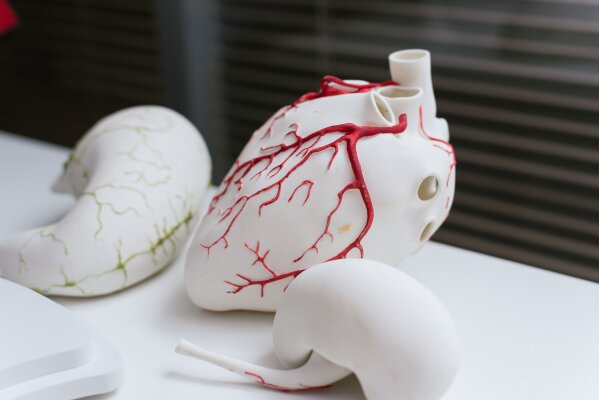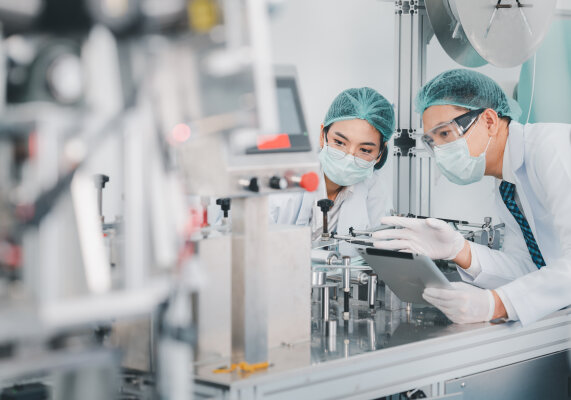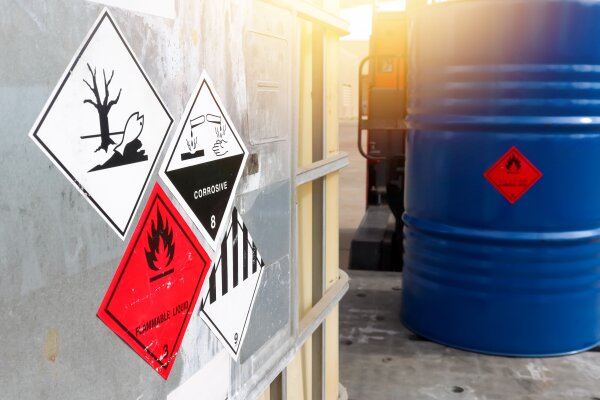The human being from the 3D printer? News about the science and art of bioprinting

So far, we have only seen living blood vessels, skin and organs from 3D printers in Hollywood movies and hospital series. But what is currently still a dream of the future for us could soon be reality. How far along are we at this point? When will it be possible to transplant the first printed organs? Together with Dr. Michael Ausserlechner from the Medical University of Innsbruck, we shed some light on the subject.
Will we soon be able to print viable organs?
Research in the field of 3D bioprinting has grown rapidly in recent years. The aim is to reproduce the complex function and structure of biological systems from human tissue onto whole organs and thus, at best, to save human lives, e.g. through transplantation. In this interview with Dr. Michael Ausserlechner, we explore the questions of how this complex system actually works and what the current state of research is.
About Michael J. Ausserlechner, M.D.
Michael J. Ausserlechner has been Assistant Professor at the Department of Pediatrics I and Head of the Molecular Biology Research Laboratory at the Medical University of Innsbruck since 2014. He studied microbiology and did his MSc thesis at the Institute of Experimental Pathology in Innsbruck in the group of Prof. Dr. Georg Wick. In 2006 he received the venia docendi (habilitation) in pathophysiology. Michael J. Ausserlechner received several scientific awards, including the "Prize of the Principality of Liechtenstein for Scientific Research at the Medical University of Innsbruck 2005" and the "Otto Kraup Prize 2007". Main research interests are the molecular function and regulation of FOXO transcription factors and IAPs, their influence on ROS regulation and approaches to modulate their activity by small drug-like compounds.

Background, research status and a look into the future of bioprinting
Mr. Ausserlechner, first of all, thank you for taking the time to answer a few questions.
Before we go into detail, can you explain to me how bioprinting works in general?
Dr. Michael J. Ausserlechner: Bioprinting can basically be described as a type of 3D printing in which we use bio-molecules and living cells instead of plastic for printing and arrange them in a pattern to resemble biology-inspired living tissue. This includes, for example, simpler organs, like skin. So we're not "building" something out of plastic, but out of living cells and tissue proteins. 3D printing, of course, is a bit more complicated. On the one hand, since you are working with living cells, you have to make sure that the printing conditions allow for the survival of these cells, from which a "tissue equivalent" is constructed. Also, after 3D printing, the living tissue is cultured in nutrient fluid and the cells begin to self-organize and develop. To do this, the 3D-printed human tissue may then need to be mechanically stimulated or exposed to other conditions to develop, for example, a functioning muscle or properly constructed skin.
When we think about or read about bioprinting, it seems like science fiction to us - but we hear it's already really possible. So there are different areas where the results of bioprinting can be used. In your opinion, what is the current state of research and what is the main goal for which we will use bioprinting in the future?
Dr. Michael J. Ausserlechner: Well, I think that this technology is driven by more or less two different requirements. On the one hand, we have the limited number of donor organs available for life-saving transplantation. That's possibly the bigger goal - to save more people by making more donor organs available through bioprinting. The other big goal is to eliminate animal testing by using human tissue created by the 3D printer.
The state of research or final implementation depends on the complexity of the organ to be transplanted. Currently, for example, it is still challenging to "print" a transplantable kidney because it is very complex, made up of a variety of different cell types, and has a complicated substructure. All of these structures would first have to be printed and then assembled so that they actually work and all of the cells work as they are supposed to. It would be simpler at present to generate skin tissue, which can then be used for skin burns, for example. Here, skin cells can be taken from the patient, multiplied in cell culture and then used to print a patient-specific, multi-layered skin. Since these are the patient's own cells, the risk of the patient subsequently reacting to and rejecting the new transplanted tissue is minimized. Unlike the usual transplants, in this case there is also no need for lifelong treatment that suppresses the immune system. But it's all a matter of complexity - creating a living, functioning heart, as with a 3D-printed kidney, is of course much more challenging.
This is an important point. Let's stay on the subject of organs. In recent years, it was possible to print a heart in Tel Aviv using the 3D printer, but unfortunately it was not functional. How long do you think it will take before we manage to create these complex organs?
Michael J. Ausserlechner, M.D.: The problem is still that it is now possible to reproduce the structure of a heart using living heart muscle cells. This applies to the outer shape, but not to how individual heart muscle cells, connective tissue cells or nerve cells are arranged, for example. The team from Tel Aviv also printed vessels and chambers in the heart, but we have to take into account that the heart or the respective organ in our body grows and develops for many years and decades. In the process, the respective cells also change the protein scaffold accordingly and leave behind "marks" so that there is information on the protein scaffold of the organ as to how cells "sitting" there should develop and how they should perform their function. It is not currently possible to replicate such markings at the molecular level using 3D printing. One possibility, however, is to prepare the protein scaffold from, for example, an animal heart and add this "matrix" to the "cell ink" to be printed for the 3D printer, so that at least the existing, organ-specific proteins with the important information can be transferred.
If this should be possible in the future, this would not only be a chance for patients waiting for a donor organ, but also for the abolition of animal experiments. According to our research, the new Covid vaccine has allegedly already been tested on printed tissue in Russia. Can you explain to us how this works?
Dr. Michael J. Ausserlechner: Yes, it is possible to produce lung tissue or several functional layers of lung tissue and use them to test whether, for example, antibodies produced with the vaccine prevent the Covid-19 virus from "docking" with the cells. In the course of this, it will then also be possible to investigate the effect of the respective antibodies in more detail or to search for drugs that prevent viruses from replicating in the cell. Work is also being done on inserting immune cells into the lung tissue, for example, so that vaccine research can be carried out on the printed tissue - this would then also make it possible to dispense with a great deal of animal testing in this area.
What exciting projects are you and the Medical University of Innsbruck currently working on?
Mag. Dr. Michael J. Ausserlechner: One of our most important projects is 3D printing of skin with the aim of building a very complex, living skin model that contains not only the uppermost skin layers (epidermis and dermis) but also the so-called subdermis. The aim is to recreate the skin with fine blood vessels in order to investigate, for example, exactly how the wound healing process takes place and how we can approach medical advances and improvements here.
What personal goal is particularly close to your heart when it comes to bioprinting?
Dr. Michael J. Ausserlechner: Our team is particularly interested in using 3D-printed tissue models to develop new patient-specific forms of therapy, especially for childhood cancers, and at the same time to reduce animal testing in medical research. In order to better understand disease-related processes in the body, within tissues or organs, and to be able to better treat diseases, bio-printed tissue constructed from human cells is the ideal way for us.
Thank you very much for the interview, Mr. Ausserlechner.
Video: Learn more about bioprinting
Still science fiction or already reality? Our medsolutTV host Vincent Schneider has taken a closer look at the topic of bioprinting and brings you everything about the function of this innovative technology, the international state of research as well as an exciting outlook into future developments in a new episode! Curious? Discover it for yourself...
Do you have comments or questions about the topic or would you like to share a topic suggestion for our upcoming posts as well as our YouTube channel? Then don't hesitate to contact us at any time. We openly accept your suggestions.




